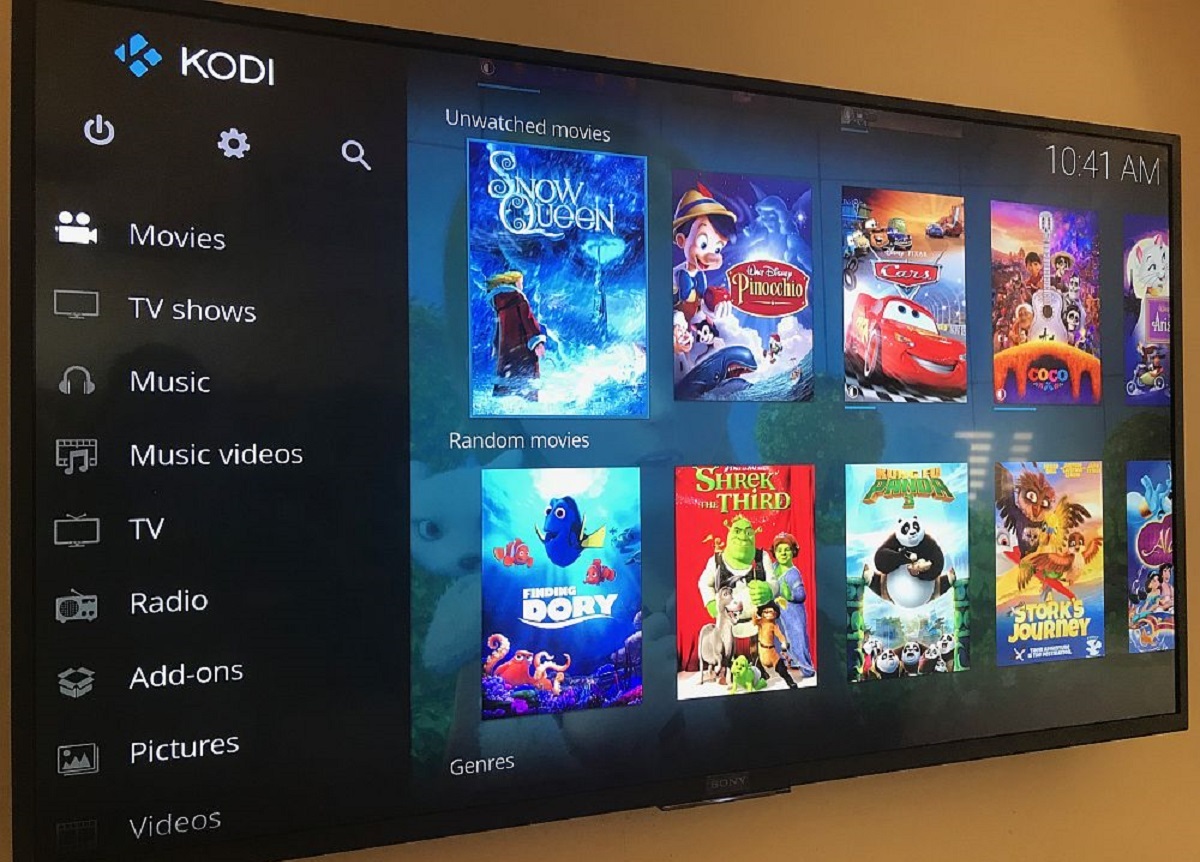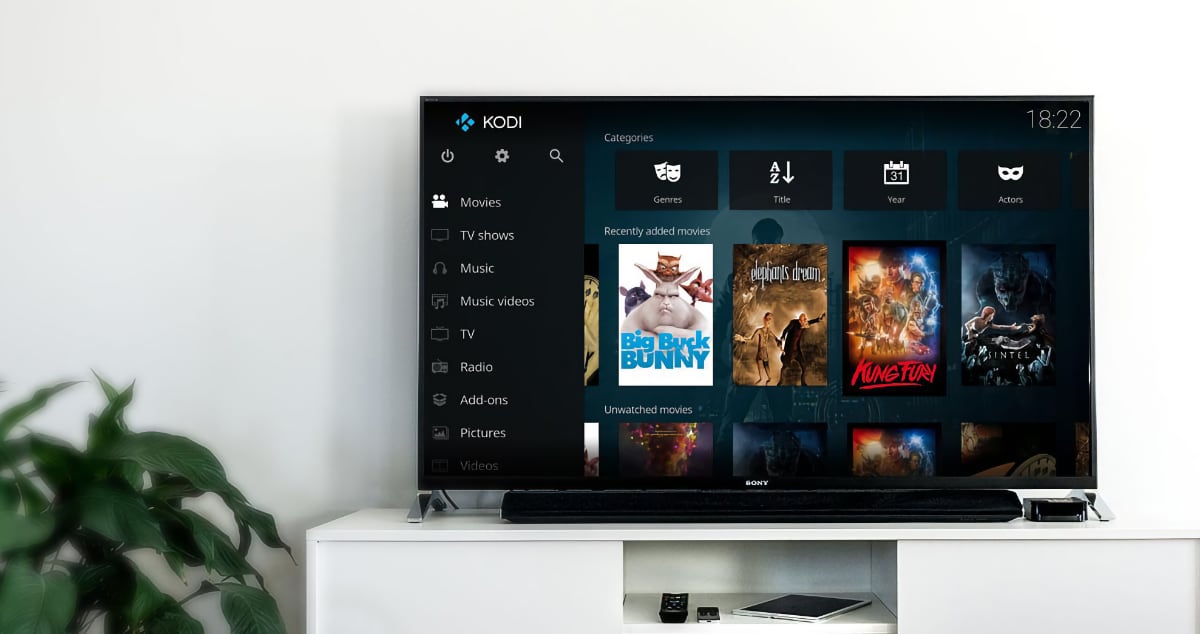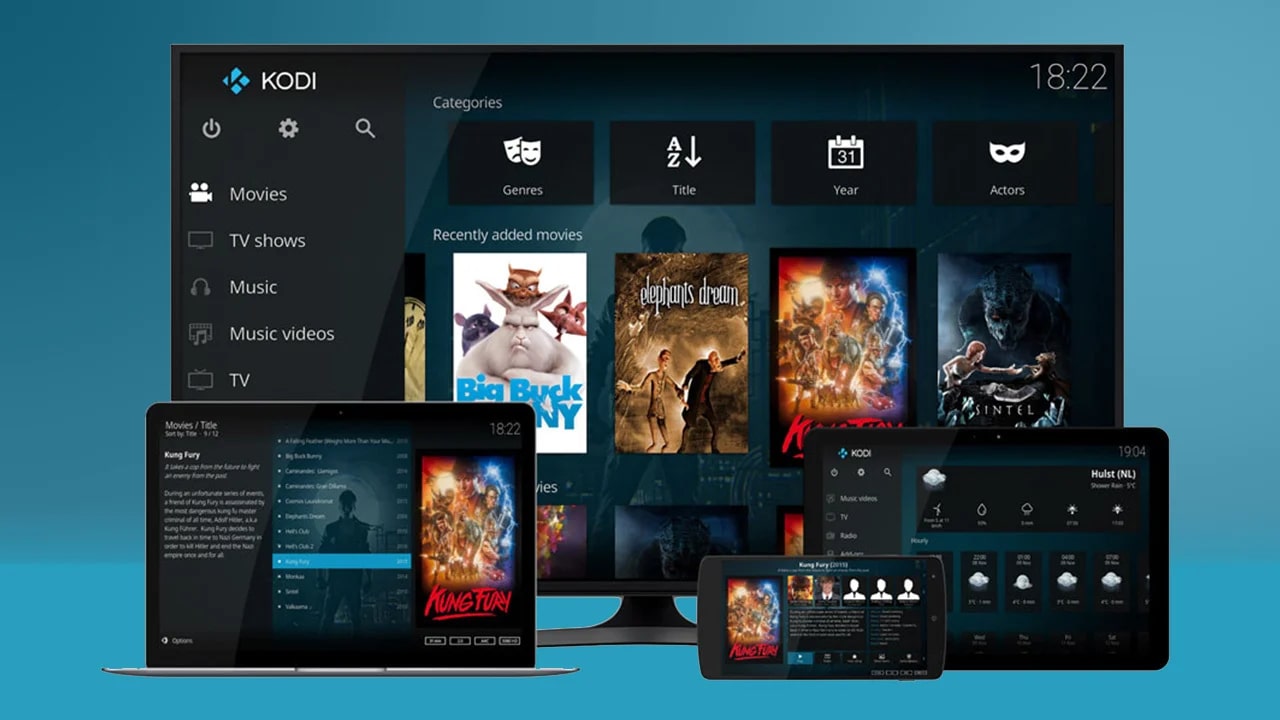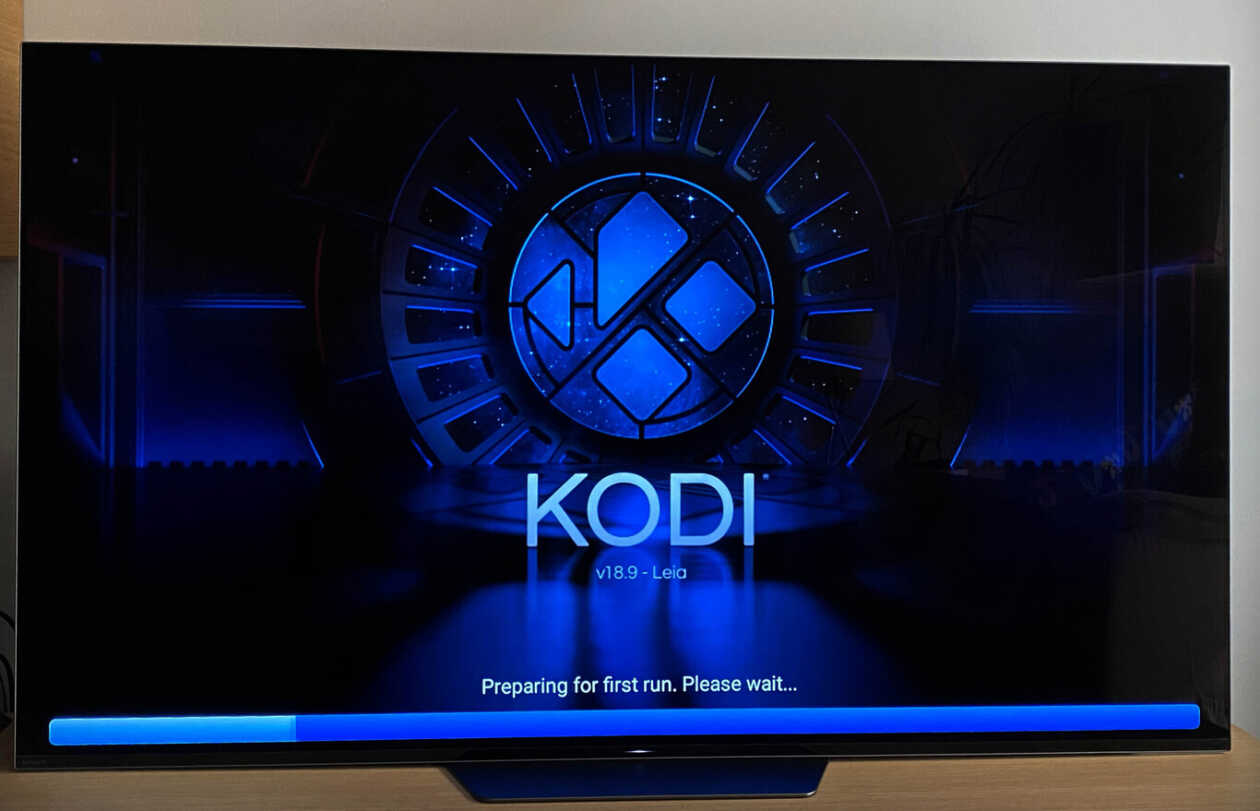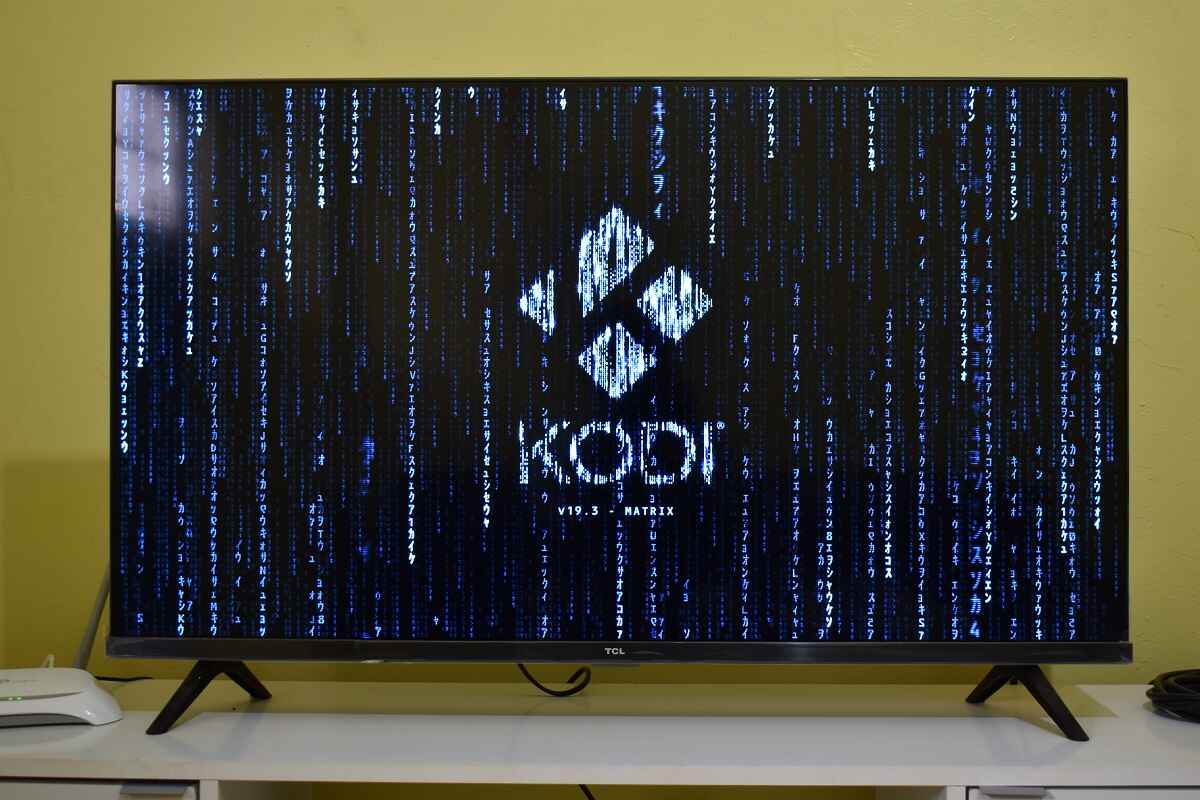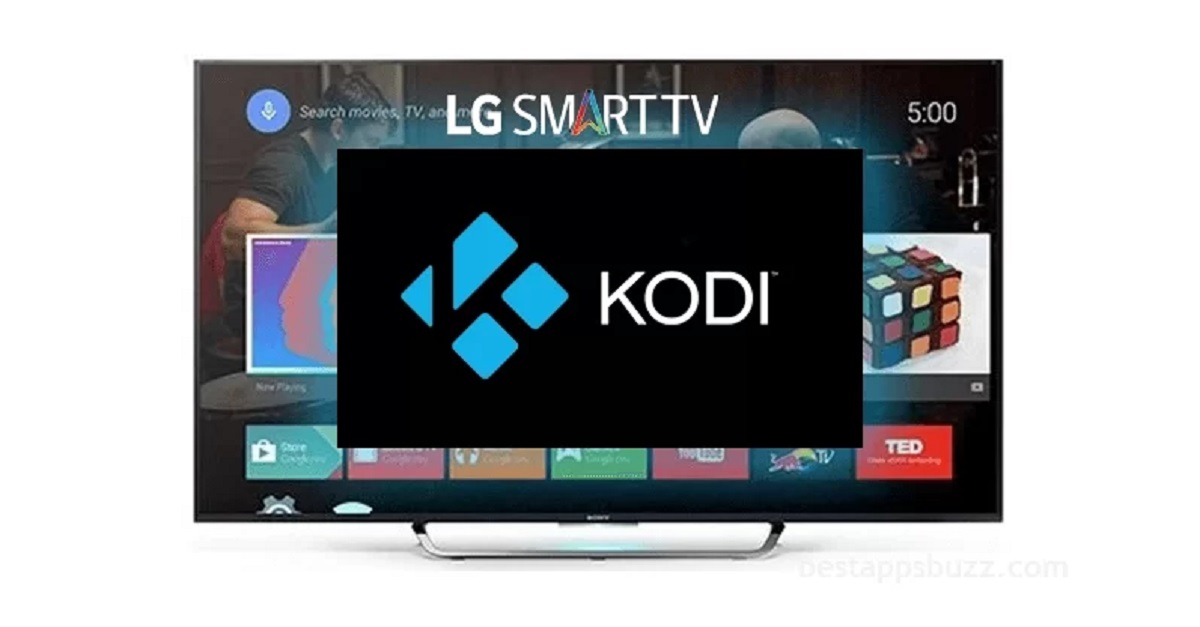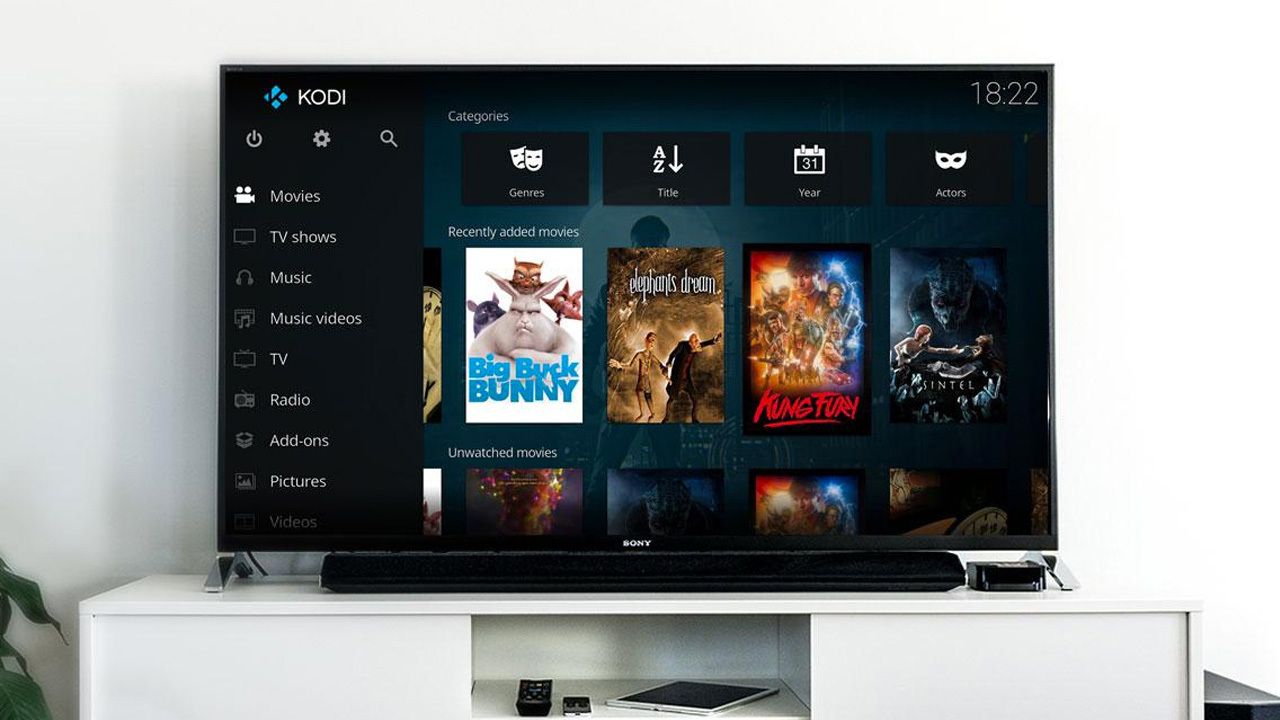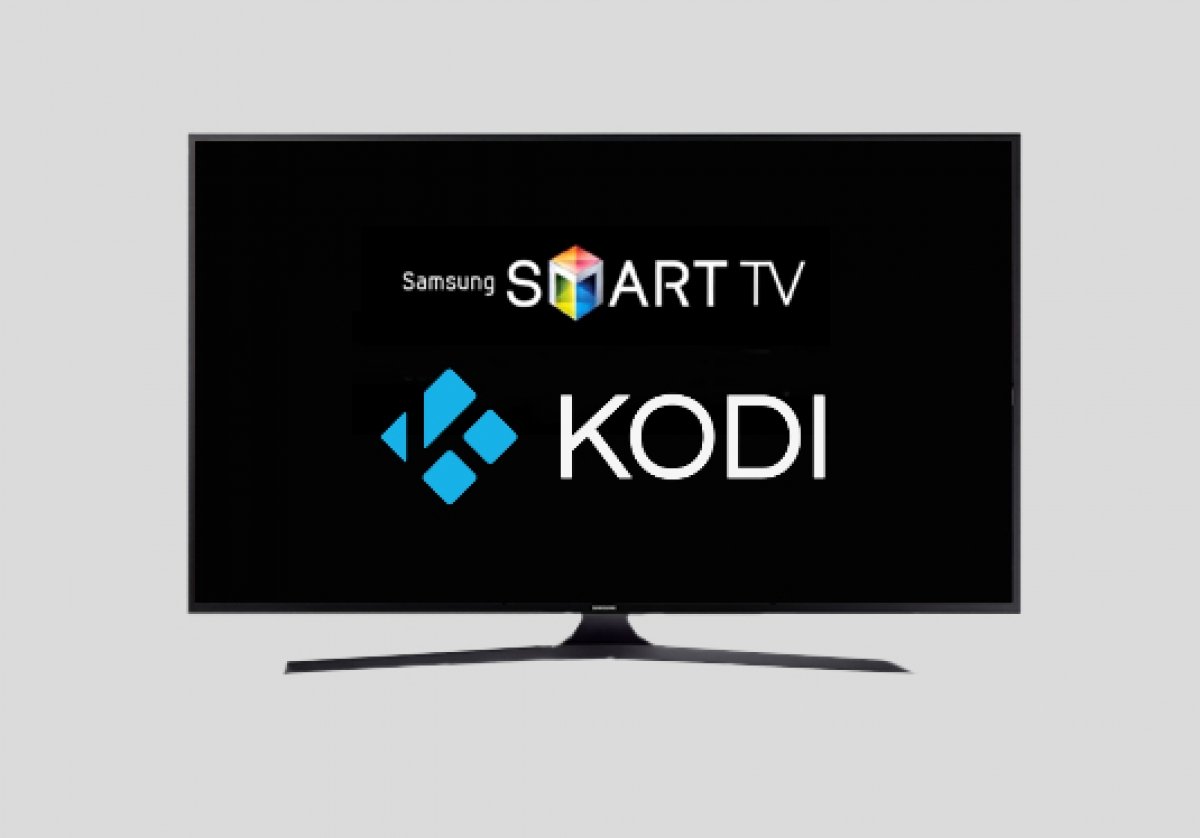Introduction
Smart TVs have become increasingly popular in recent years as they offer a range of features and capabilities that traditional televisions cannot match. One such feature is the ability to install and use various applications and streaming platforms, including Kodi. Kodi is a powerful media player that allows you to stream your favorite movies, TV shows, and even live TV channels on your Smart TV. In this article, we will guide you through the steps to get Kodi on your Smart TV, whether you have an Android TV, Firestick, Raspberry Pi, or Chromecast device.
Before diving into the installation process, it is important to note that not all Smart TVs are compatible with Kodi. Some models may have restrictions or limitations that prevent you from installing third-party applications like Kodi. Therefore, the first step is to check if your Smart TV is compatible with Kodi.
If your Smart TV meets the compatibility requirements, there are several methods you can use to install Kodi. One option is to use an Android TV box, which allows you to connect a device running the Android operating system to your Smart TV and leverage its capabilities to install Kodi. Another method is to use a Firestick, a small streaming device that plugs into your Smart TV’s HDMI port and enables you to install Kodi through the Amazon Appstore.
If you have a Raspberry Pi, a credit card-sized computer, you can also turn it into a media center by installing Kodi on it and connecting it to your Smart TV. Lastly, if you have a Chromecast device, you can cast Kodi content from a mobile device or computer to your Smart TV.
In the following sections, we will provide detailed instructions for each method, helping you get Kodi up and running on your Smart TV. Additionally, we will share some tips and tricks to enhance your Kodi experience on your Smart TV, such as installing add-ons, customizing the interface, and optimizing the performance.
Whether you’re a movie buff, a TV series addict, or simply looking to enjoy a wide range of entertainment options on your Smart TV, installing Kodi opens up a world of possibilities. So, let’s get started and bring the power of Kodi to your Smart TV!
Step 1: Check if your Smart TV is compatible with Kodi
Before you begin the installation process, it’s important to check if your Smart TV is compatible with Kodi. While most modern Smart TVs support a wide range of applications, some models have limitations or restrictions that may prevent you from installing or using Kodi.
The first thing you should do is refer to your Smart TV’s user manual or visit the manufacturer’s website to see if they officially support the installation of third-party applications. Look for any information regarding app compatibility or the ability to sideload applications onto your TV.
If your Smart TV does not explicitly mention compatibility with Kodi or third-party apps, don’t worry just yet. There are alternative methods to install Kodi on your Smart TV, such as using an Android TV box or a streaming device like a Firestick or Chromecast. These methods bypass any restrictions imposed by your Smart TV’s operating system and grant you the freedom to enjoy Kodi’s features.
Additionally, you can check if your Smart TV runs on Android. Android Smart TVs are generally more compatible with Kodi because they share the same operating system and have built-in support for installing third-party apps. To confirm if your Smart TV is Android-based, go to the Settings menu and look for an option called “About,” “System Information,” or something similar. Here, you should find information about your TV’s operating system.
If your Smart TV is not compatible with Kodi, don’t fret. There are numerous affordable options available like Android TV boxes, Firestick, or Raspberry Pi, which can transform your existing TV into a Smart TV capable of running Kodi. These devices connect to your TV through HDMI and offer a wide range of features beyond just Kodi.
By ensuring compatibility with Kodi or exploring alternative options, you will be well-prepared to proceed with the installation process without any unforeseen hindrances. Now that you know whether your Smart TV can support Kodi, let’s move on to the next step and explore the various installation methods.
Step 2: Install Kodi on your Smart TV using an Android TV box
If your Smart TV is not compatible with Kodi or if you want a more flexible solution, you can use an Android TV box to install and run Kodi. An Android TV box is a small device that connects to your TV’s HDMI port and runs on the Android operating system, allowing you to access and install various apps, including Kodi.
Here are the steps to install Kodi on your Smart TV using an Android TV box:
- Connect the Android TV box to your Smart TV by plugging it into the HDMI port.
- Ensure that your TV is set to the correct HDMI input where you connected the Android TV box.
- Power on the Android TV box and follow the on-screen instructions to set it up.
- Once the setup is complete, navigate to the Google Play Store on the Android TV box and search for “Kodi”.
- Select the official Kodi app from the search results and click on “Install” to start the installation process.
- Wait for the installation to finish. Once done, you can launch Kodi from the app drawer on your Android TV box.
- Now, you can configure Kodi and start enjoying your favorite movies, TV shows, and more on your Smart TV.
Using an Android TV box to install Kodi offers several benefits. Firstly, it provides a dedicated hardware device for running Kodi, ensuring smooth and seamless playback of your media files. Secondly, it gives you access to the entire Android ecosystem, allowing you to install additional apps and customize your streaming experience. Lastly, Android TV boxes often come with powerful hardware specifications, enabling high-resolution video streaming and supporting advanced features of Kodi.
With Kodi successfully installed on your Smart TV through an Android TV box, you now have a versatile media player at your fingertips. You can explore the vast library of add-ons, customize the interface, and enjoy a personalized entertainment experience from the comfort of your living room.
Step 3: Install Kodi on your Smart TV using a Firestick
If you own an Amazon Firestick, a popular streaming device, you can easily install Kodi and enjoy its features on your Smart TV. The Firestick runs on Amazon’s Fire OS, a customized version of the Android operating system, which allows you to install third-party apps like Kodi.
Here are the steps to install Kodi on your Smart TV using a Firestick:
- Connect the Firestick to your Smart TV by plugging it into the HDMI port.
- Power on the Firestick and ensure that your TV is set to the correct HDMI input.
- Go to the settings on your Firestick by navigating to the home screen and selecting the gear icon.
- Scroll to “My Fire TV” or “Device” and open it.
- Choose “Developer options” and enable “Apps from Unknown Sources”.
- Return to the Firestick home screen and search for the “Downloader” app.
- Install the Downloader app and open it.
- In the Downloader app, enter the URL: “https://kodi.tv/download” and download the latest version of Kodi for Android.
- After the download is complete, install the Kodi APK file and launch the app.
- Now you can configure Kodi on your Smart TV and start streaming your favorite content.
Using a Firestick to install Kodi offers the advantage of a simple and user-friendly setup. The Fire OS interface is designed to be intuitive, making it easy to navigate and access your media files within Kodi. Additionally, the Firestick remote control provides convenient navigation and control over Kodi’s features.
Furthermore, the Firestick is a cost-effective solution to add smart capabilities to your TV without having to purchase a new Smart TV. It also comes with built-in support for popular streaming services, Netflix, Amazon Prime, and more, allowing you to enjoy a wide range of content alongside Kodi.
Once you have Kodi installed on your Smart TV through the Firestick, you can explore its vast collection of add-ons, customize the settings to your liking, and unlock a world of entertainment from various sources.
Step 4: Install Kodi on your Smart TV using a Raspberry Pi
If you’re looking for a more advanced and customizable solution, you can use a Raspberry Pi to install and run Kodi on your Smart TV. A Raspberry Pi is a small and affordable single-board computer that can be transformed into a media center by installing Kodi.
Here are the steps to install Kodi on your Smart TV using a Raspberry Pi:
- Start by setting up your Raspberry Pi by connecting it to a power source, monitor, and keyboard.
- Install a Linux operating system on the Raspberry Pi, such as Raspbian, following the official documentation.
- Once the installation is complete, open the terminal and update the system by running the following command:
sudo apt-get update. - Next, install Kodi on your Raspberry Pi by running the command:
sudo apt-get install kodi -y. - Wait for the installation to finish. Once done, you can launch Kodi by going to the main menu and selecting it.
- Configure Kodi according to your preferences, including adding media sources and installing add-ons.
- Connect your Raspberry Pi to your Smart TV using an HDMI cable, ensuring the TV is set to the correct HDMI input.
- Now, you can use your Smart TV as a display for Kodi running on the Raspberry Pi.
Using a Raspberry Pi to install Kodi offers a high level of customization and flexibility. With its powerful hardware capabilities, the Raspberry Pi can handle high-definition video playback and support advanced Kodi features. Additionally, you can take advantage of the Raspberry Pi’s GPIO pins to integrate additional hardware for a truly unique media center experience.
Another benefit of using a Raspberry Pi is that it can serve as a dedicated media center, allowing you to enjoy Kodi without relying on another device like a streaming stick or TV box. It also provides a cost-effective solution since a Raspberry Pi is significantly cheaper than purchasing a new Smart TV.
With Kodi running on your Smart TV through a Raspberry Pi, you can enjoy a wide range of media content, customize the Kodi settings to your liking, and take advantage of the extensive library of add-ons to enhance your entertainment experience.
Step 5: Install Kodi on your Smart TV using a Chromecast device
If you own a Chromecast device, you can also stream Kodi content from your mobile device or computer to your Smart TV. Chromecast is a small, affordable device that plugs into your TV’s HDMI port and allows you to cast media from various sources, including Kodi.
Here are the steps to install Kodi on your Smart TV using a Chromecast device:
- Ensure that your Chromecast device and your Smart TV are connected to the same Wi-Fi network.
- Set up your Chromecast device by following the instructions provided with the device.
- On your mobile device or computer, download and install the Google Home app from the App Store or Play Store.
- Open the Google Home app and locate your Chromecast device.
- Click on the Chromecast device and select “Set up” to connect it to your Wi-Fi network.
- Once your Chromecast is set up, open the Google Home app again and select the Chromecast device.
- Tap the “Cast” button and choose the screen or app you want to cast.
- Open the Kodi app on your mobile device or computer and start playing the media you want to stream.
- Click on the “Cast” button within the Kodi app and select your Chromecast device as the casting destination.
- Your Kodi media will now play on your Smart TV through the Chromecast device.
Using a Chromecast device to stream Kodi content offers a convenient and wireless solution for enjoying your favorite media on your Smart TV. You can control the playback and settings directly from your mobile device or computer, giving you an intuitive and user-friendly experience.
Moreover, Chromecast supports various media formats and resolutions, allowing you to stream high-quality content from Kodi to your Smart TV without any loss in audio or video quality. You can also enjoy the benefits of Kodi’s add-ons and customization options while casting to your TV.
With Kodi installed on your mobile device or computer, and a Chromecast device connected to your Smart TV, you have the freedom to stream and enjoy your favorite movies, TV shows, and more on a larger screen with ease.
Step 6: Tips and tricks for using Kodi on your Smart TV
Now that you have successfully installed Kodi on your Smart TV using one of the methods mentioned earlier, it’s time to explore some tips and tricks to enhance your Kodi experience. These tips will help you make the most out of your Kodi installation and customize it according to your preferences.
1. Install add-ons: Kodi offers a wide range of add-ons that extend its functionality and provide access to additional content. Explore the official Kodi add-on repository or popular third-party add-on repositories to find add-ons for movies, TV shows, sports, music, and more.
2. Customize the interface: Kodi allows you to personalize the interface to suit your preferences. Take advantage of different skins and themes to change the look and feel of Kodi. You can also customize the home screen layout and add shortcuts to your favorite add-ons or media sources.
3. Utilize keyboard shortcuts: If you’re using Kodi on a device with a physical keyboard, familiarize yourself with keyboard shortcuts. These shortcuts can help you navigate through Kodi more efficiently and control playback without relying solely on a remote control or on-screen menus.
4. Enable automatic library updates: If you have a large media library, consider enabling automatic library updates in Kodi. This feature ensures that Kodi stays up to date with any new media you add to your library, making it easier to browse and access your content.
5. Use a VPN for privacy and access: Consider using a virtual private network (VPN) when using Kodi, especially if you’re accessing geo-restricted content or using third-party add-ons. A VPN can help protect your privacy, secure your internet connection, and bypass geographical restrictions.
6. Optimize video playback settings: If you’re experiencing buffering or playback issues, you can optimize Kodi’s video playback settings. Adjusting settings such as cache size, deinterlacing, and hardware acceleration can help improve the streaming performance on your Smart TV.
7. Regularly update Kodi: Kodi releases periodic updates that include bug fixes, performance improvements, and new features. Make sure to regularly check for updates and keep your Kodi installation up to date to ensure a smooth and secure experience.
8. Explore Kodi forums and communities: Join online forums and communities dedicated to Kodi to learn tips, tricks, and troubleshoot any issues you may encounter. You can find useful information, tutorials, and support from experienced Kodi users and developers.
By implementing these tips and tricks, you can take your Kodi experience to new heights. Enjoy the versatility of Kodi and make it your go-to media player on your Smart TV, bringing countless hours of entertainment directly to your living room.
Conclusion
Bringing Kodi to your Smart TV opens up a world of entertainment possibilities. Whether you have an Android TV, Firestick, Raspberry Pi, or Chromecast device, you can install Kodi and enjoy a wide range of movies, TV shows, music, and more. By following the steps outlined in this guide, you can easily set up Kodi on your Smart TV and start streaming your favorite content.
Remember to first check if your Smart TV is compatible with Kodi. If not, don’t worry; you can use alternative methods such as an Android TV box or a Raspberry Pi to make your TV Kodi-compatible. Each method offers unique benefits and flexibility, allowing you to choose the option that suits your needs and budget.
Once you have Kodi installed on your Smart TV, don’t forget to explore the various add-ons, customize the interface, and take advantage of the extensive features Kodi has to offer. From streaming popular movies and TV shows to organizing your media library, Kodi provides a seamless and enjoyable media playback experience.
Additionally, incorporating the suggested tips and tricks will further enhance your Kodi experience. Whether it’s installing add-ons, optimizing video playback settings, or using a VPN for privacy and access, these recommendations will help you unlock the full potential of Kodi on your Smart TV.
Lastly, remember to keep your Kodi installation updated and stay connected with the Kodi community through forums and online communities. This ensures that you stay up to date with the latest features, bug fixes, and receive support whenever needed.
So, go ahead and transform your Smart TV into an ultimate media center with Kodi. Dive into a world of endless entertainment possibilities, personalized settings, and a seamless streaming experience right from the comfort of your living room.







